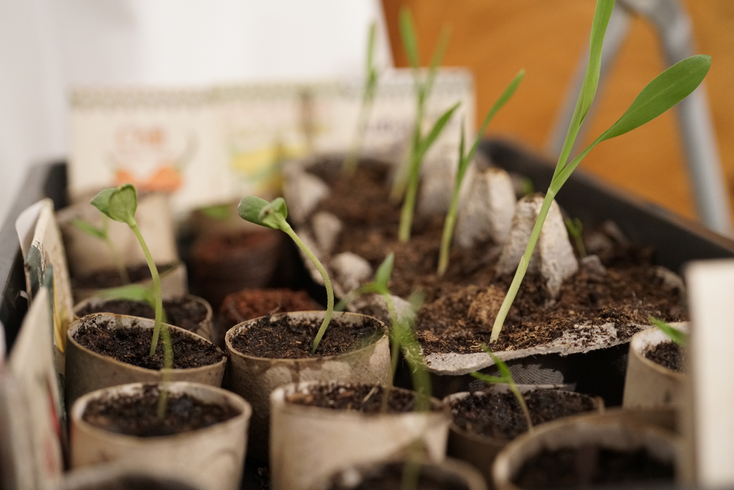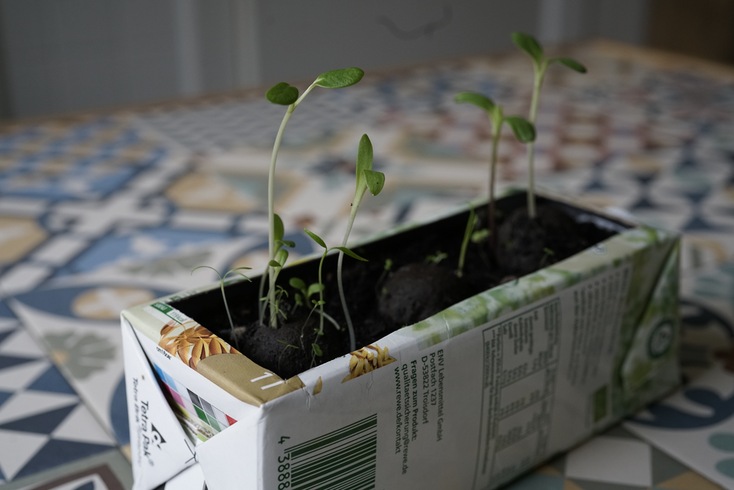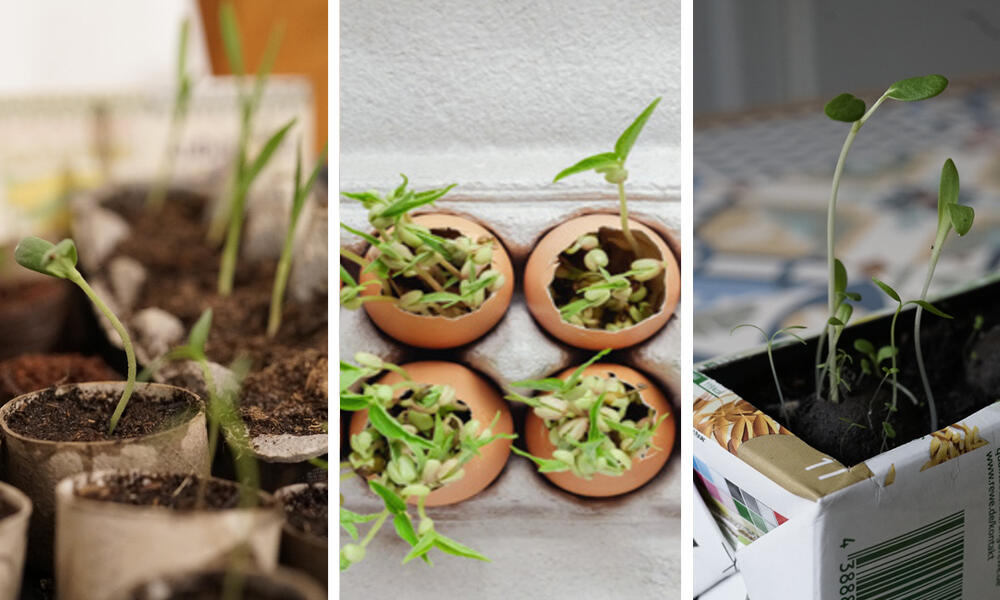Stop! Do not throw the used toilet paper roll, the empty egg carton and the drunk milk carton into the trash! Because from them you can make wonderful growing pots themselves. Read the craft instructions here!
Urban gardening has become an ongoing trend. To successfully grow vegetables, herbs and flowers, all you need is a windowsill and homemade growing pots in which vegetables, herbs or flowers sprout. Whether you’re an adult or a child, it’s simply wonderful to see what you’ve planted thrive. And if the growing pots are homemade and you save toilet paper rolls and the like from the trash, the pride is even greater. The environment and your wallet will also be happier than if you were to buy new plastic propagation pots.
Contents
Make your own growing pots out of toilet paper rolls: Here’s how.
- First cut the toilet paper rolls in half.
- So that the small paper pots get a bottom and the soil stays nicely in it, cut the rolls at the bottom all around 4 times about 1 centimeter wide. If necessary, draw marks in advance with a pencil and ruler.
- Then simply fold the four lobes inward to create a bottom.
- Now place the homemade growing pots on one or more waterproof saucers. You can place this in a wooden box. This way they stand even more stable.
- Then add growing soil to the paper pots and plant seeds.

Make your own growing pots from egg cartons: This is how it works
One thing first: Use only uncolored egg cartons for crafting growing pots. Otherwise, you risk getting color pigments from the carton into the soil and onto your plant. Or, instead of using the carton itself, use eggshells as mini grow pots. We’ll explain both variations:
- First, cut off the lid of the egg carton. If you want to plant eggshells, rinse them thoroughly and let them dry.
- Now fill either the individual compartments of the packaging or the eggshells with soil.
- Place everything on a waterproof saucer.
- Poke holes in the soil – about the size of a pencil – and sprinkle seeds inside.
- Now all you have to do is water and wait in anticipation.

Make your own growing pots from milk cartons: Here’s how.
Empty Tetrapaks are not only wonderful for sustainable gift wrapping. They are also a great material for homemade growing pots, as they are already waterproof on the inside thanks to their coating. Therefore, an empty milk carton doesn’t have to end up in the yellow garbage can right away.
- First, rinse the empty milk carton thoroughly and let it dry.
- Then you can start making the propagator: Lay the milk carton horizontally on the table. Then cut out the top almost completely, except for a border about 1 centimeter wide. It is best to use a cutter for this. It will handle the material best.
- To avoid waterlogging, you must now poke small holes in the bottom of the milk carton growing pot.
- Now you can fill the upcycled milk carton with soil and insert seeds.
- Placed on a waterproof saucer, the homemade seed pot can be placed on the sunny windowsill.



